The Maltese islands of Malta and Gozo are characterized by an extensive network of parallel lines etched deep into the stone. These ancient tracks, numbering in the hundreds if not thousands, present an enigma to scholars. Some of the curious lines seem to intentionally lead off cliffs or extend from land into the sea. The question remains: Who created these mystifying lines, and for what purpose?
The lines, deeply scored into the bedrock, crisscross the islands, with a prominent presence at Misrah Ghar il-Kbir, an ancient cliff site on Malta. Much like the intriguing Nazca lines of Peru or the enormous stone circles in the Middle East, these tracks have stumped researchers for years. Yet, unlike the ceremonial or divine intentions suggested for desert markings, these so-called “cart ruts” of Malta are presumed to be evidence of transportation or industrial activity—the primitive railroads of the ancient world.
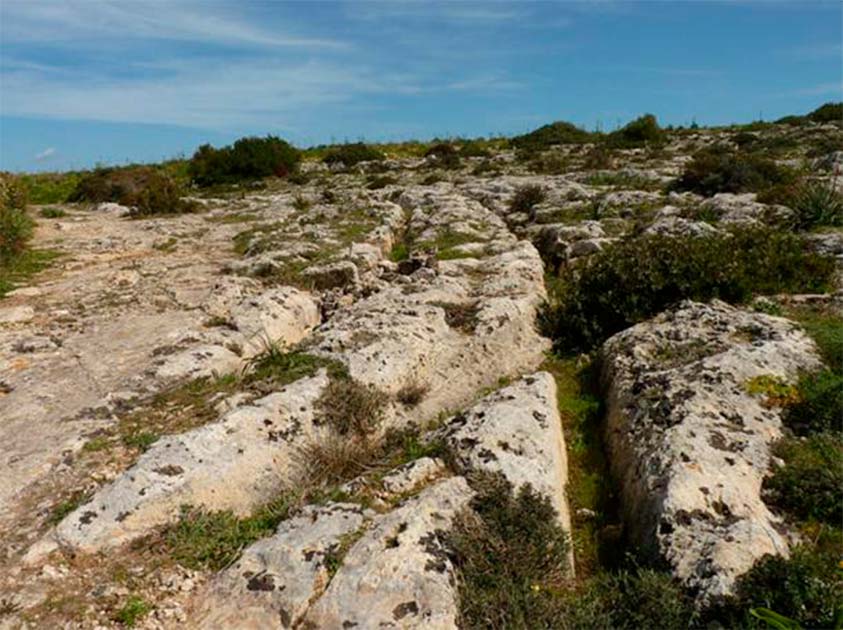
The term “cart ruts” arises from their visual similarity to tracks left by carts, but their exact purpose and method of creation remain unknown. These man-made furrows consist of dual channels, parallel grooves carved into the islands’ limestone bedrock. The channels vary in depth from eight to 15 centimeters (4 to 6 inches) , but some can reach as deep as 60 centimeters (24 inches). The distance between the tracks is about 140 centimeters (55 inches), but not consistently. Notably, the tracks at the San Gwann site in Malta are reportedly half a meter deep, marking them as the deepest discovered.
According to an article by CartRutsMalta.com, it seems implausible that any vehicle—whether sled or wheeled—could traverse these tracks as the axle or platform would need to be over one or two meters high.
There is a variety in the appearance of the ruts, with some being narrow, deep, and angular, as if carved with tools, while others are wider, shallower, and V-shaped, suggesting erosion through time and usage. Does this variability imply different vehicles for different purposes, or simply the effects of varying weathering over time?
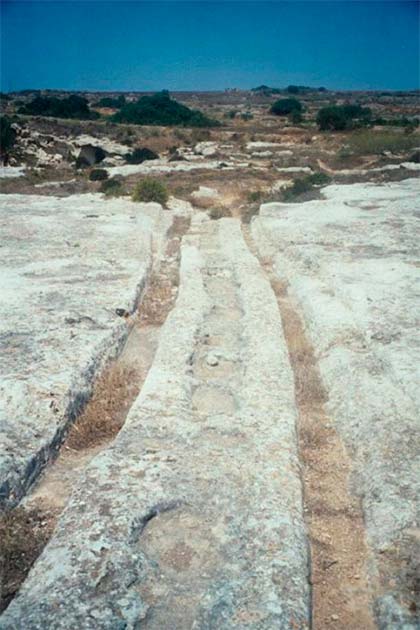
The purpose of the ruts remains elusive, as some of the tracks abruptly run off cliff edges, traverse steep ridges, or even extend off the island into the sea, continuing underwater.
At Misrah Ghar il-Kbir, the ruts are so abundant that the site has earned the nickname “Clapham Junction”. The number and seeming congestion of the tracks mirror the intricate web of rails found at the bustling railway station in London, England.
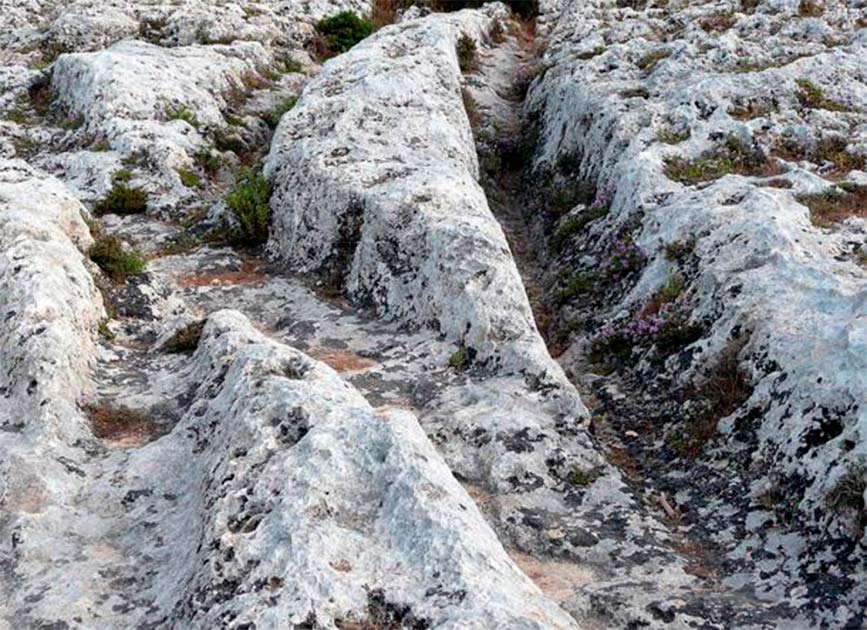
Similar tracks can be found in Italy, Greece, Turkey, Spain, France, and Germany, but they differ in origin and known purposes. Some tracks were deliberately constructed with masonry, and some patterns resulted from natural erosion of wagon tracks. These differences render the tracks in Malta unique worldwide.
Archaeologists theorize that the Maltese ruts resulted from the repeated passage of carts, sleds, or skids (wheeled or on runners) over the same route for decades or centuries. This system may have facilitated the transportation of goods. Others speculate that these deliberate channels constituted an ancient irrigation system across the islands. A less widely accepted theory proposes an astronomical function for the lines.
Adding to the mystery is the question of how the carts were propelled. If animals were used to pull the carts, their footprints might be expected between or outside the parallel grooves, but no such evidence exists. This lack of evidence leads some researchers to conjecture that the carts were manually pushed or pulled by humans.
The lines are speculated to have been left by newcomers from Sicily who arrived in Malta around 2000 BC, at the dawn of the Bronze Age. Yet, Maltese archaeologist Anthony Bonanno posits that the ruts are Phoenician works, which would place their creation in the relatively more recent seventh century BC.
Some researchers link these enigmatic lines to the remarkable temples of Malta. It’s speculated that the tracks could be residual evidence of the methods employed in the construction of these temples. Could it be possible that these sleds were used to haul heavy quarried stones from distant locations to the temple sites?
- Derinkuyu: History of Turkey’s Underground City
- The Mysteries of the Bimini Road: Ancient, Underwater… and Artificial?
The temple sites of Malta and Gozo have gained worldwide renown. The more than 30 stone temple complexes and structures date from 5500 to 2500 B.C. These structures are said to be the oldest known freestanding monuments in the world, predating Stonehenge and the Egyptian pyramids.
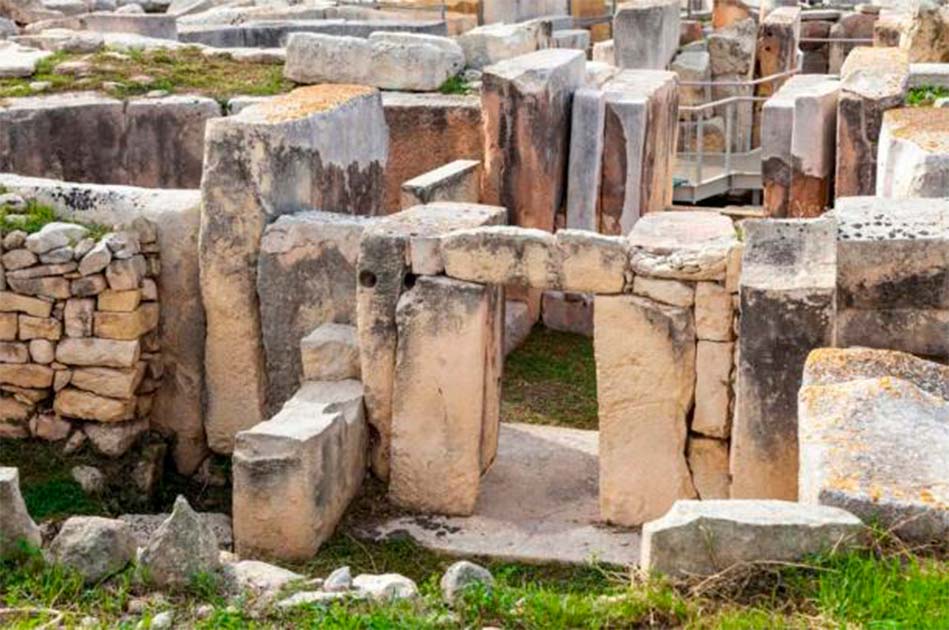
One hypothesis suggests that the cart ruts were formed during this Temple Period as topsoil was moved to and from sites for the creation of nearby crop fields.
Anthony Bonanno, an archaeologist, is of the firm belief that the ruts are intrinsically linked to the temples. He highlights the Buskett-area group of tracks, which runs adjacent to the largest and most significant quarry in Malta. Bonanno speculates that these were created to transport enormous blocks for construction from the quarry to a road in ancient times. Drawing a parallel with the construction of Stonehenge where heavy stones were transported over distances up to 225 kilometers (140 miles), Bonanno suggests that the temple builders in Malta may have had a preference for certain types of stones and went to great lengths to transport them to the construction sites.
However, these ruts do not have clear starting or ending points at the megalithic temples in Malta, so this remains a speculative theory.
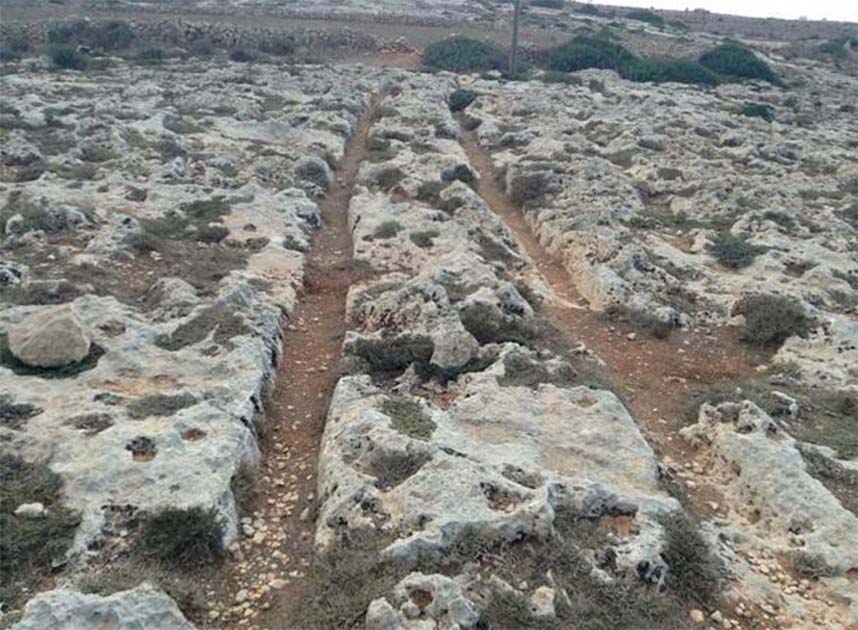
It has not been definitively established that all of the ruts were the result of heavy loads. Some tracks are so well defined that they might have been manually cut. Author and journalist Graham Hancock writes in his book “Underworld: The Mysterious Origins of Civilization”, “It is certain, too, that they were not simply worn away in the tough limestone by the passage of cart-wheels over periods of centuries, as many have wrongly theorized; on the contrary, there is no proof whatsoever that cart-wheels ever ran in these ruts – which were initially carved out of the bedrock with the use of tools.”
A plethora of questions continue to surround the mysterious cart ruts of Malta. Clearly, the channels served a significant role in the lives of the ancient inhabitants, but their true purpose and the role they played might forever remain a mystery, the answers obscured by the passage of time.
Top image: Cart Ruts at Misrah Ghar il-Kbir, Malta. Source: Maximilian99 / CC BY-SA 3.0.
By Liz Leafloor